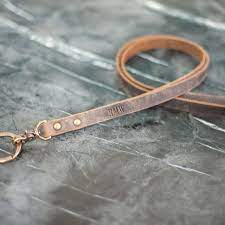leather lanyard singapore
What is leather lanyard?
Leather is a robust, flexible and durable fabric acquired from the tanning, or chemical remedy, of animal skins and hides to prevent decay. The maximum not unusual leathers come from cattle, sheep, goats, equine animals, buffalo, pigs and hogs, and aquatic animals including seals and alligators.[1][2]
leather-based can be used to make a selection of gadgets, which includes garb, shoes, handbags, furniture, gear and sports activities device, and lasts for decades. leather lanyard singapore making has been practiced for more than 7,000 years and the main manufacturers of leather these days are china and india.[1][2][3]
animal rights corporations declare that current business leather-based making and the consumption of its merchandise is unethically killing animals.[4] consistent with the lifestyles-cycle assessment (lca) file for the united international locations industrial improvement corporation, ninety nine% of the raw hides and skins used inside the manufacturing of leather derive from animals raised for meat and/or dairy production.[5]
critics of tanneries declare that they have interaction in unsustainable practices that pose health dangers to the humans and the environment close to them.[6] the processing degrees of tanneries use hundreds of liters of water for one hide or animal skin and launch toxic liquid waste into the environment that may cause soil depletion and fitness troubles related to the human pores and skin, breathing machine and extra. But, improvements were made in the quantity and treatment of water utilized by tanneries to lessen impact.
The leather manufacturing system is split into three essential subprocesses: preparatory ranges, tanning, and crusting. A in addition subprocess, completing, may be brought into the leather technique sequence, however not all leathers get hold of completing. The preparatory stages are when the hide is prepared for tanning. Preparatory stages may additionally include soaking, hair removal, liming, deliming, bating, bleaching, and pickling.
Tanning is a system that stabilizes the proteins, in particular collagen, of the uncooked hide to boom the thermal, chemical and microbiological stability of the hides and skins, making it appropriate for a extensive sort of end applications. The primary difference between raw and tanned hides is that raw hides dry out to form a hard, inflexible cloth that, when rewetted, will putrefy, at the same time as tanned fabric dries to a bendy shape that does not turn out to be putrid while rewetted.
Many tanning methods and substances exist. The everyday technique sees tanners load the hides right into a drum and immerse them in a tank that carries the tanning "liquor". The hides soak even as the drum slowly rotates about its axis, and the tanning liquor slowly penetrates via the whole thickness of the hide.
As soon as the process achieves even penetration, people slowly raise the liquor's ph in a process referred to as basification, which fixes the tanning cloth to the leather. The extra tanning fabric constant, the better the leather's hydrothermal balance and shrinkage temperature resistance. Crusting is a method that thins and lubricates leather-based.
It regularly consists of a coloring operation. Chemical substances brought at some point of crusting should be fixed in area. Crusting culminates with a drying and softening operation, and might encompass splitting, shaving, dyeing, whitening or different methods. For a few leathers, tanners apply a floor coating, referred to as "finishing". Completing operations can encompass oiling, brushing, buffing, coating, polishing, embossing, glazing, or tumbling, amongst others.
Leather may be oiled to improve its water resistance. This currying process after tanning dietary supplements the herbal oils last within the leather itself, which may be washed out thru repeated exposure to water. Frequent oiling of leather, with mink oil, neatsfoot oil, or a similar material keeps it supple and improves its lifespan dramatically. Read more..



Comments
Post a Comment